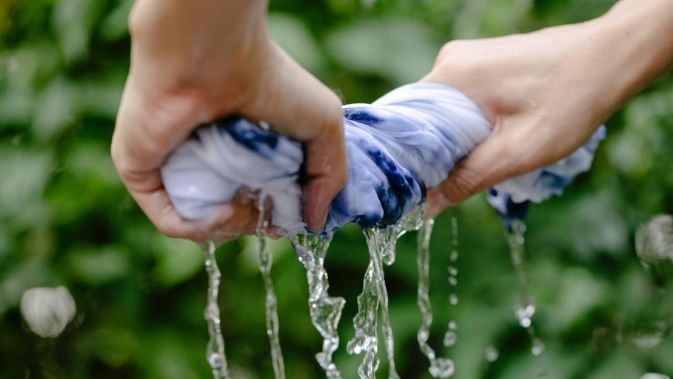
Nothing is more frustrating than purchasing an expensive dress or lingerie set, wearing it once, and then having it come out ripped, torn, or stretched out in the washer. You might have even avoided washing your bras or silk items altogether because you were afraid of ruining them. Fortunately, washing machines and dry cleaning aren't your only options for laundry. Hand washing your clothes is an excellent way to save money, water, and avoid going to the laundromat.
Why Should You Wash Your Clothes by Hand?
"Hand washing clothes can help them last longer," says Jessica Ek, the American Cleansing Institute's director of digital communication. While modern miracles like the washer and dryer save us time, they aren't always the best for our clothes.
"The heat can break down delicate fabrics, and the tumbling of the washer and dryer can cause some items to lose their shape or snag," she adds.
If you need a special dress or piece of clothing for an event but don't want to lug a whole load of clothes to the laundromat or waste water using your own washer, hand washing is a great option. Hand washing clothes can also help you remove stubborn stains without ruining them.
Hand washing is recommended for delicates such as bras and underwear, bathing suits, lace clothing, and wool clothing, according to Ek. However, always read the label tag on your clothes carefully to ensure that they are cleaned properly.
While hand washing may appear simple in theory, there are numerous ways to cause more harm than good to your prized possessions. Below is a simple step-by-step guide on how to properly hand wash your clothes and keep them looking new.
First, pre-treat your stains.
If there are any stains on your item(s), treat them now before washing. The American Cleaning Institute has a helpful stain removal guide that can help you remove almost any stain. Alternatively, you can use your regular stain remover or treatment. Just remember to handle your delicates with care. While it may be tempting to scrub the stain away, Ek advises against it, advising us to "help minimise wear and tear" by letting the cleaner and detergent do their work.
Step 2: Combine the water and detergent in a mixing bowl.
Add your laundry detergent to a sink or wash basin full of room temperature water. Then, with your hand, mix it up to move the detergent around. Turn off the water when the sink or basin is full.
Step three is to wash
Place your item(s) in the washing machine and agitate the water with your hands or a wash wand to get the detergent to work. Don't be too rough with your clothes, either. Allow no more than thirty minutes for your clothes to soak, especially silks, as they will shrink.
Step 4: Finish by rinsing.
People frequently make the mistake of rinsing their clothes with their faucet. This is actually bad for your clothes because the fabric will stretch due to the running water. Instead, place your clothes in a colander and spray cold water through it using the sprayer setting on your faucet.
Step 5: Allow to dry
"Don't get your pants in a tangle" isn't just a saying; twisting your clothing to remove excess water causes the fabric to lose its shape and may cause damage. Don't ruin your clothes by wringing them out to dry after spending so much time washing them. Instead, Ek suggests gently squeezing the clothing and laying it flat to dry and absorb any excess water.
To dry your clothes, always lay them flat. They will lose their shape or be damaged if you hang them up or put them in the dryer. You can, however, put them on a drying rack to speed up the process.
Was this helpful?
Kingerlon collects & utilizes cookies from third-parties & affiliate networks to improve user experience. If you buy a product or service after clicking on one of our links, we may get a commission.










